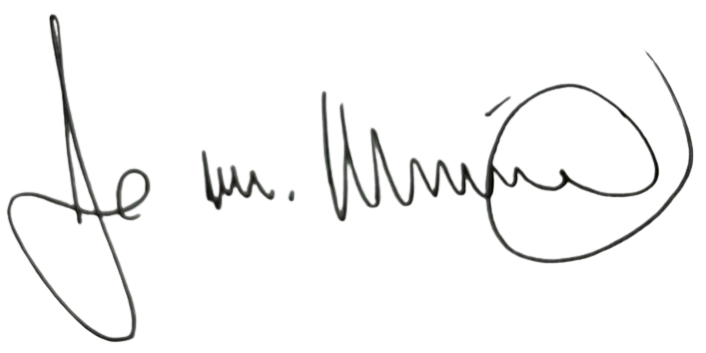written by “Jake Mannino”
We live in a world overflowing with choices. From picking a restaurant for dinner to making critical business decisions, the abundance of options can seem like a blessing. However, research suggests that too many choices can actually hinder decision-making. This psychological phenomenon, known as decision paralysis, occurs when the sheer volume of options overwhelms us, making it harder to choose anything at all.
The paradox of choice suggests that while people generally believe that more options are better, too many choices often lead to anxiety, dissatisfaction, and, in some cases, complete indecision. Let’s explore this phenomenon and strategies for overcoming decision paralysis.
Understanding the Paradox of Choice
The concept of the “paradox of choice” was popularized by psychologist Barry Schwartz in his book The Paradox of Choice: Why More Is Less. Schwartz argues that an overabundance of options can lead to the following:
- Decision Paralysis: When presented with too many options, individuals may become overwhelmed and struggle to make a choice. This indecision can delay important actions and lead to missed opportunities.
- Decreased Satisfaction: Even after making a choice, the presence of so many alternatives can lead to second-guessing. People often worry that they could have made a better choice, which reduces overall satisfaction and creates regret.
- Increased Anxiety: The pressure to make the “right” choice among so many options can create anxiety, particularly for people who are perfectionists or who fear making mistakes.
The Psychological Impact of Too Many Choices
Several psychological factors contribute to decision paralysis when faced with an overwhelming number of options:
- Cognitive Overload: Our brains have a limited capacity for processing information. When bombarded with too many choices, we experience cognitive overload, making it difficult to weigh the pros and cons of each option.
- Fear of Regret: When we are presented with more options, we are more likely to worry about making the wrong choice. This fear of future regret can prevent us from committing to any option at all.
- Opportunity Costs: More choices mean more opportunity costs—the options we have to give up when we make a decision. Thinking about what we might be missing out on can increase the difficulty of choosing and lead to dissatisfaction.
- Maximization vs. Satisficing: Some people are “maximizers,” always striving to make the perfect choice, while others are “satisficers,” content with a good-enough decision. Maximizers are more prone to decision paralysis because they want to evaluate all available options to ensure they’re making the best possible choice, which can be exhausting and anxiety-inducing.
How Decision Paralysis Manifests in Leadership
For leaders, the paradox of choice can be particularly problematic. In today’s complex business environment, leaders are often faced with a myriad of options when it comes to strategy, investments, product development, and more. The fear of making the wrong decision can lead to prolonged indecision or, in some cases, avoidance altogether. This can result in missed opportunities, delayed progress, and reduced effectiveness.
The pressure to make the “perfect” decision can be especially intense in leadership, where the stakes are high, and the impact of decisions can ripple across an entire organization. But when leaders fall into decision paralysis, it can create bottlenecks and slow down the entire team.
Strategies for Overcoming Decision Paralysis
While the paradox of choice is a natural psychological response, there are effective strategies for overcoming decision paralysis and making confident decisions, even in the face of many options.
1. Limit the Number of Choices
One of the most straightforward ways to combat decision paralysis is to reduce the number of options you consider. This could involve pre-filtering choices based on specific criteria or creating clear decision-making frameworks.
How to Apply This:
- Set Parameters: Narrow down your options by setting specific parameters or constraints. For example, if you’re choosing a software solution, limit your options to those that fit within a certain budget or provide key features.
- Use Shortlists: Create a shortlist of three to five options that meet your criteria, and focus your evaluation on these choices rather than all possible options.
2. Establish Decision Criteria
Before diving into a decision, clarify the criteria that will guide your choice. Understanding what’s most important—whether it’s cost, efficiency, scalability, or another factor—will help you evaluate options more objectively and make faster decisions.
How to Apply This:
- Rank your criteria: Determine the factors that matter most for this decision and rank them by priority. This helps you focus on what’s essential rather than getting bogged down in details.
- Evaluate options systematically: Once you’ve established your decision criteria, evaluate each option based on how well it meets those criteria.
3. Set Time Limits
Imposing a deadline can help you avoid overthinking and encourage you to make a decision more efficiently. Without a time limit, it’s easy to fall into the trap of continuously gathering more information, even when you already have enough to make an informed choice.
How to Apply This:
- Set a decision deadline: If you find yourself stalling, set a clear deadline for when the decision must be made. This could be a few hours, a day, or a week, depending on the complexity of the decision.
- Timebox research and evaluation: Allocate a specific amount of time for researching and evaluating options, and make a decision once that time has elapsed.
4. Embrace “Good Enough” Decisions
Leaders don’t need to make perfect decisions every time. In many cases, the best course of action is to make a “good enough” decision and move forward. This concept, known as satisficing, involves choosing an option that meets the minimum criteria for success, rather than seeking the perfect solution.
How to Apply This:
- Set a decision threshold: Determine what constitutes an acceptable decision and make your choice once you’ve found an option that meets those criteria.
- Learn to let go of perfection: Remind yourself that no decision is perfect, and that you can always adjust course later if necessary.
5. Involve Others in the Decision-Making Process
Collaborating with your team or trusted advisors can help alleviate the pressure of making decisions alone. Input from others can provide fresh perspectives, reduce your cognitive load, and help you see options more clearly.
How to Apply This:
- Seek feedback: Ask team members or colleagues to weigh in on the decision and offer their insights.
- Delegate smaller decisions: Delegate less critical decisions to your team, allowing you to focus on the higher-stakes choices.
6. Trust Your Intuition
While data and research are critical to informed decision-making, leaders should also trust their intuition. Overanalyzing every detail can paralyze you, but trusting your instincts, particularly when you have expertise in an area, can often lead to effective decisions.
How to Apply This:
- Balance data with intuition: Combine rational analysis with your gut feeling, especially when the choice aligns with your experience and values.
- Take action and adjust: Once you’ve made a decision, act quickly and adjust if necessary. Often, taking action is more beneficial than delaying to seek the perfect answer.
Conclusion
While the paradox of choice can lead to decision paralysis, there are ways to navigate the overwhelming number of options and make effective decisions. By limiting choices, establishing clear decision criteria, setting time limits, and embracing “good enough” decisions, leaders can overcome the psychological barriers that hinder progress.
In leadership, decision-making is a constant, and the ability to make timely, effective choices is essential for success. By applying these strategies, you can reduce the burden of choice and move confidently from indecision to action—propelling both yourself and your organization toward greater success.
Happy Selling - Jake Mannino

